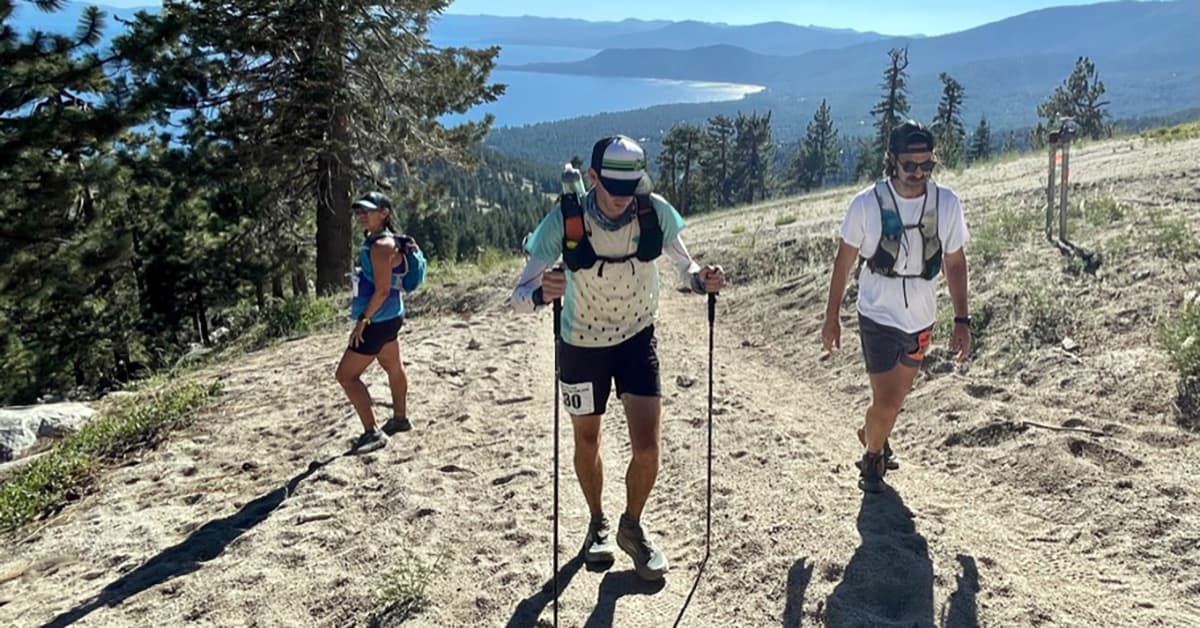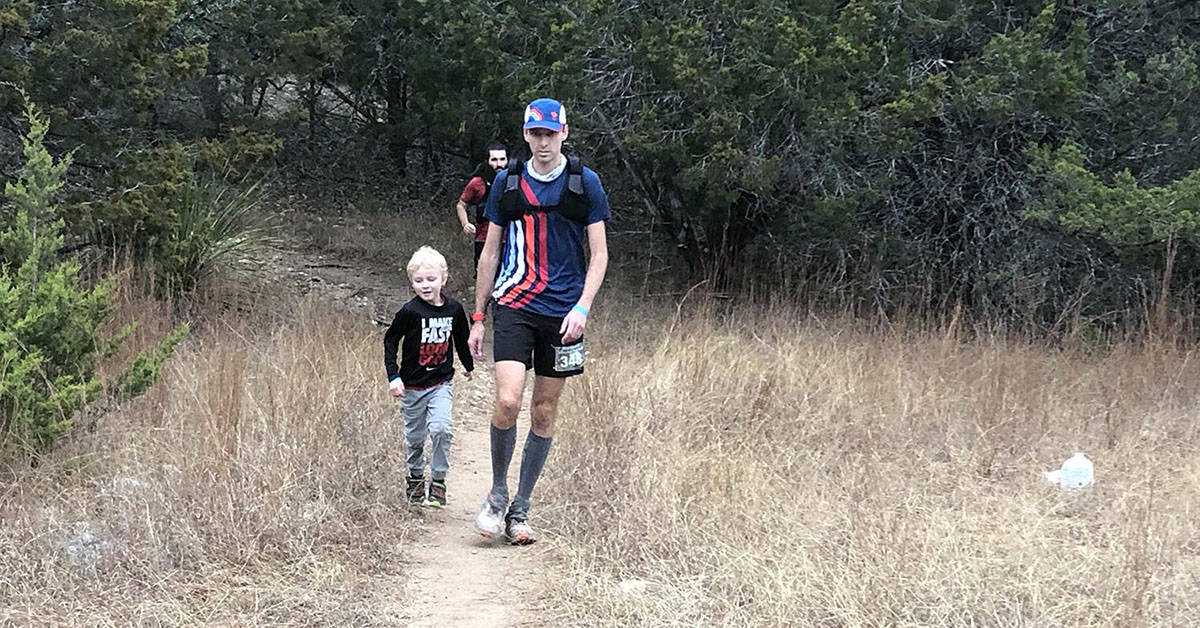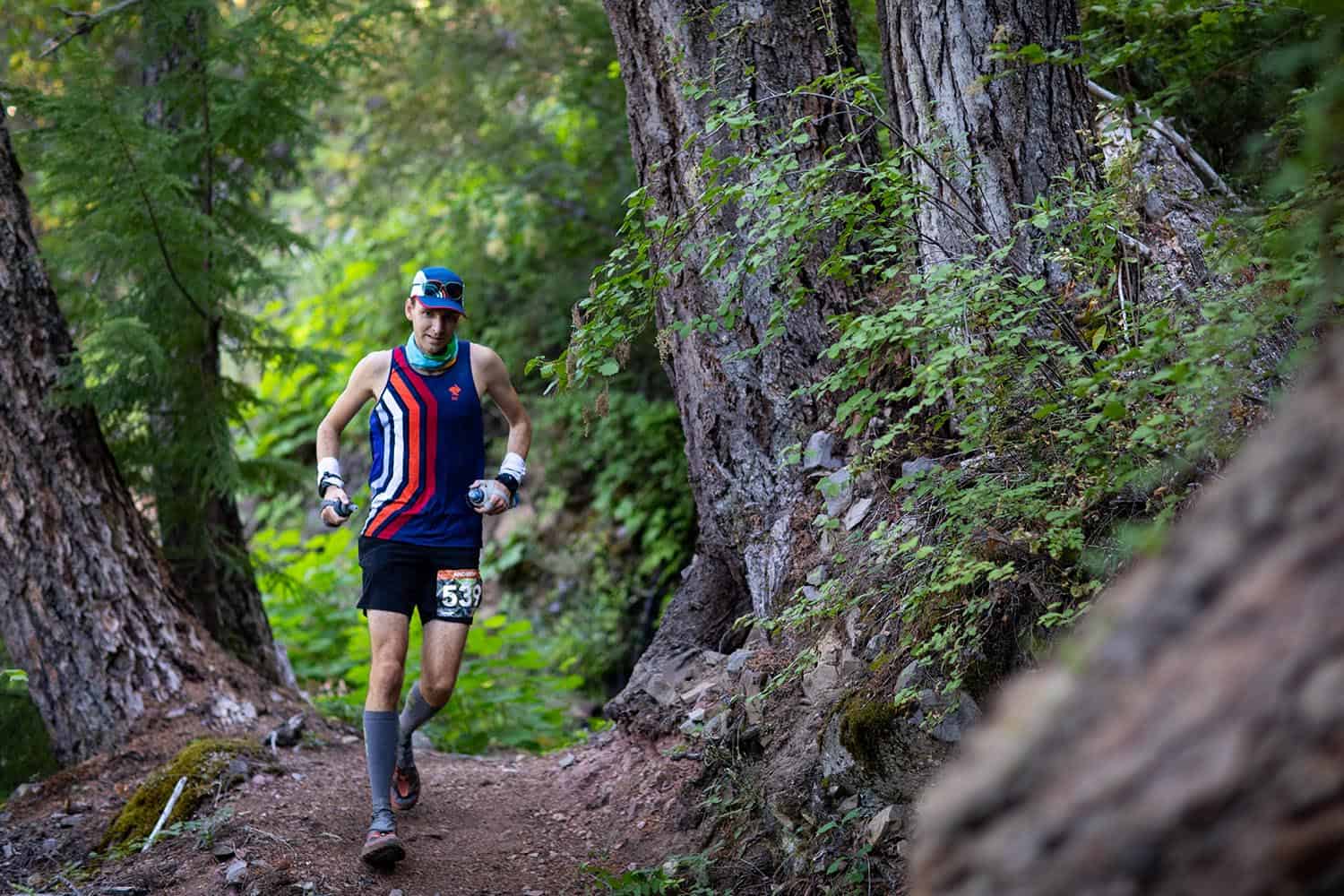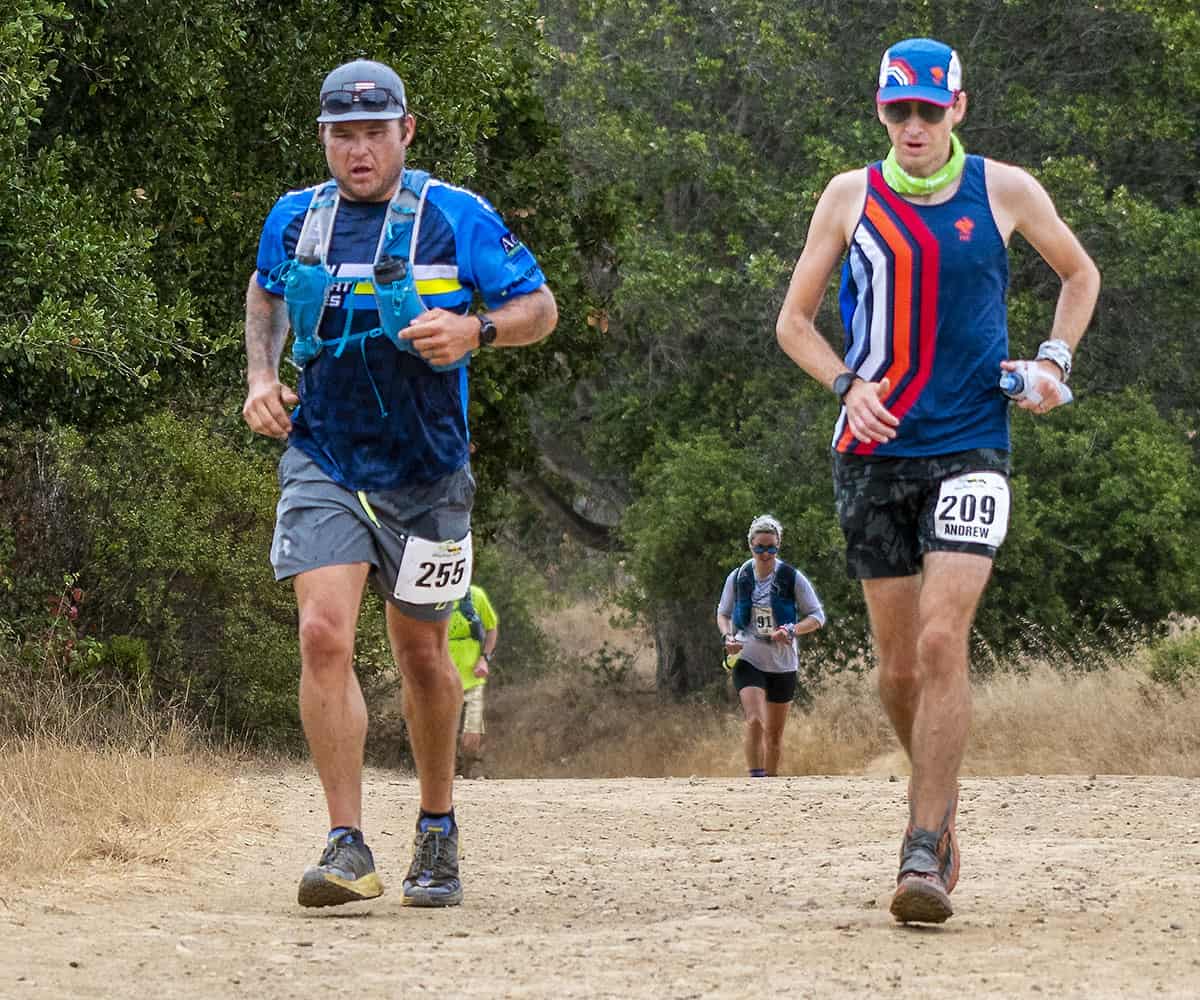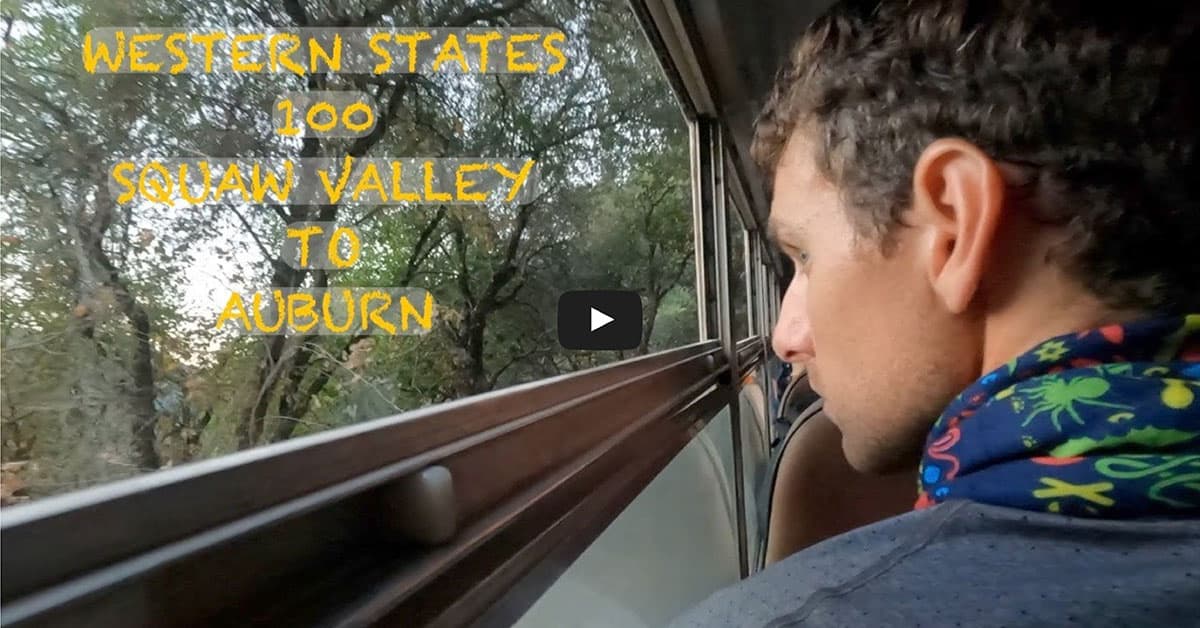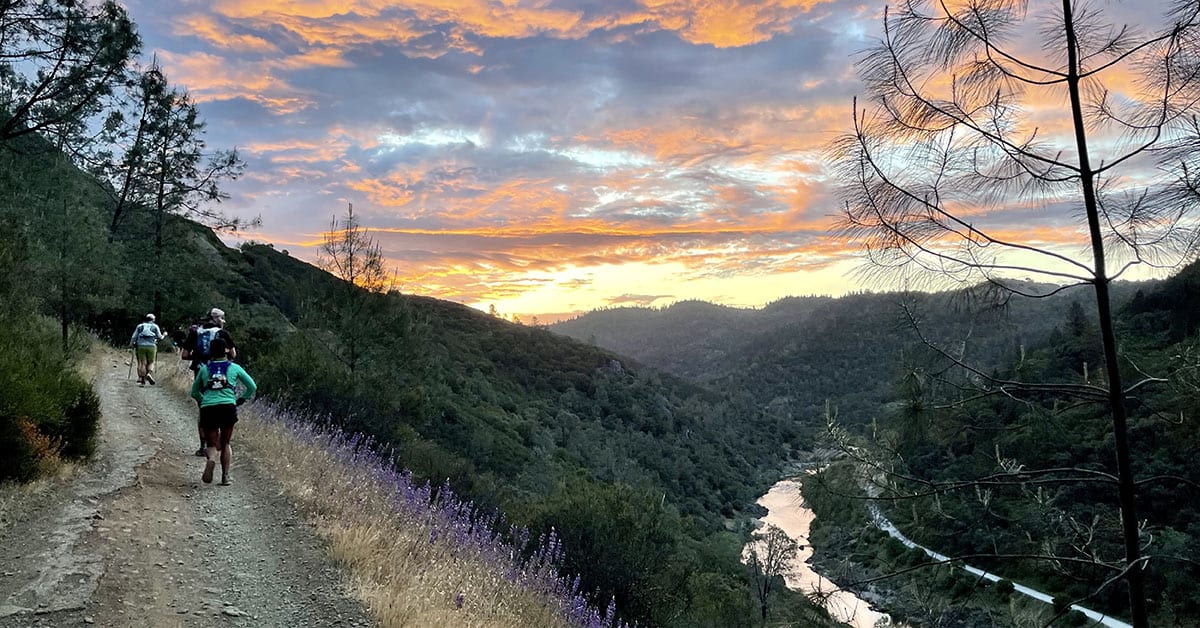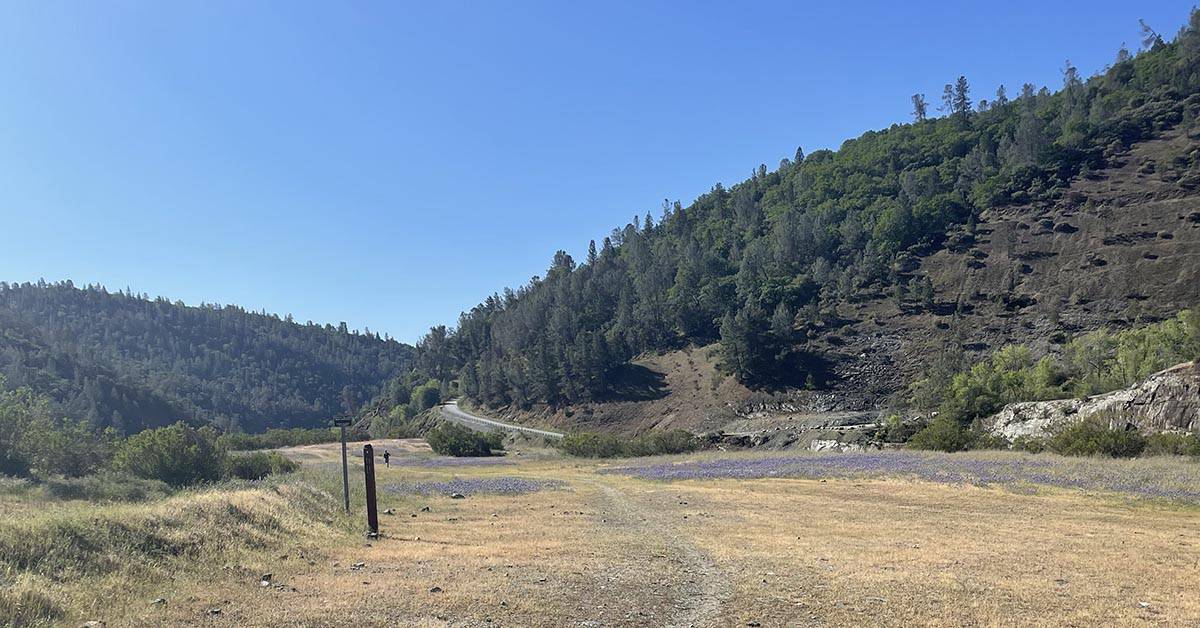My Report from the 2022 Tahoe Rim Trail 100 Mile Endurance Trail Run
Don’t ever give up on your dreams and goals!
Race: Tahoe Rim Trail 100 Mile Endurance Run
Date: Saturday/Sunday, July 16-17th, 2022
Location: Carson City, Nevada
Result: Official Time 31:39:51, 29th Place Overall, 7th in Male Age Group 30-39 (Results Link)
The 2022 Tahoe Rim Trail Endurance Runs kicked off on Saturday morning, July 16th, with a 100-mile, 50-mile, and 55k race distances. All three race distances start in Carson City, NV, and immediately climb to the tops of Lake Tahoe’s mountains, playing nicely to the event’s tagline of “a glimpse of heaven… a taste of hell.”
I attempted the TRT 100 Mile distance on two separate occasions and came short of the finish line. In 2015, I made it through the first 62 miles before calling it a day due to altitude sickness. I returned in 2017 but failed to make it past mile 50 due to falling several times on the snow fields scattered at the higher elevations. I was returning for my third attempt and looking for a bit of redemption from a race that had given me more of a taste of hell than a glimpse of heaven.
Favorite part of the Tahoe Rim Trail 100.
You cannot say enough about the panoramic views throughout the Tahoe Rim Trail 100. My favorite section of the race is the 8-mile trail between the Hobart aid station and Bull Wheel aid station. Along this section, the trail crosses back and forth across the ridgeline. One mile, you are treated with views of Lake Tahoe’s bright blue and green forest; the next, you experience the stark contrast of the desert valley.
My other favorite part of the Tahoe Rim Trail 100 would be the aid station volunteers. Much of this race course is remote, and crew access is impossible. To counter this logistical difficulty, the aid stations are big, lively, and well stocked with all your hydration and nutrition needs! You can count on being recognized and cared for at every aid station along the route.
My least favorite part of the event.
The final 12 miles of the race were probably my least favorite of the entire event. I love the concept of starting in Carson City and climbing up the mountain to the Tahoe Rim Trail, but coming back down was nowhere near as enjoyable. Given that most participants finish this race after 24 hours (5:00 AM Sunday), the final descent from Hobart to the finish is made in the sun and heat.
Leaving the Hobart aid station, the trail meanders through the forest. Frequently, you would see a runner 15-20 feet away from you, but in reality, they were half a mile or more ahead.
After a few miles of twisting and winding through the forest, the race course moved to a gradually uphill fire road. There was very little shade on this section of the course, and again it was mind game knowing that we should be going downhill to reach Carson City.
Finally, with 5 miles to go, the course begins a 2200-foot descent over a more sun-exposed trail. Some sections here were very steep, and all of it was very hot. It took all my energy to stay positive and move toward the finish line in these closing miles.
I want to see the race break up these final 12 miles with 1-2 more aid stations. Considering runners go most of the day with aid stations every 3-8 miles, and the final miles are done by most in the heat of the day, a couple more aid stations would help make these miles pass a little bit easier and more enjoyably.
Highlights of your Tahoe Rim Trail 100 Mile – What went well, and what did you enjoy?
Overall, the entire race went exceptionally well for me. Sure I would have loved to finish with a faster time, but at the end of the day, my main goal was to stay safe, have fun, and earn the finishers buckle. I was well prepared for the 18,000 feet of vertical gain, altitude, and heat, which meant that there were very few times that I was unprepared or not up to the challenge of finishing the race.
On the opening 9-mile, 4200-foot climb, I made it a point to focus on my heart rate to gauge my level of effort. I eased off the pace when my heart rate started to creep north of 150-155 beats per minute. In addition, to keeping my energy expenditure down, controlling my heart rate allowed me to stay focused and positive.
I experienced a few low points throughout the day, which are to be expected from a difficult race like the Tahoe Rim Trail 100. Each time, I worked to counter the low point with positive affirmations and identify any potential cause for the change in mood, energy levels, or upset stomach. I quickly responded by slowing my pace or decreasing my effort when I felt my mood changing for the worse or I was feeling low on energy. I assessed where I was in the race, including total time on my feet/mileage, whether I was working through a tricky climbing section, or if my mind had drifted off and I needed to refocus my attention. Below is each low point and how I responded:
Approaching Tunnel Creek (approximately mile 26)
In these final two miles approaching Tunnel Creek for the first time, my mood turned negative on me. It was a relatively flat or downhill section of the trail, and my heart rate and breathing were well controlled. Despite keeping up with my hydration and around 300-400 calories per hour, I determined that my energy levels were deficient. Upon arriving at Tunnel Creek, I took a few more minutes than planned to cool off, eat some solid food, and allow my body and mind to rest. This served me well over the first 3 miles of the Red House Loop.
Second Half of Red House Loop (miles 31-34)
The energy lift I had gained from refocusing at Tunnel Creek was pretty short-lived. As I left the Red House aid station (mile 31), my ability to run or move quickly seemed to disappear again. My heart rate was still well controlled, and I did an excellent job with hydration and nutrition.
The trail over this section was mostly uphill, and it was getting hot. With that in mind, I just needed to hunker down with positive thoughts, keep moving at any pace possible, and recharge myself once back at Tunnel Creek for the second time.
More solid calories, a Pedialyte, and lots of ice brought me back to life as I started the section of trail over to Bull Wheel, then down to Diamond Peak.
Loss of Stomach Contents (approximately mile 53)
From mile 34 to 52.5, everything was going well. My mood was good, my energy levels were high, I was consistently peeing every 2-3 hours, and I had continued to hover around a 24-26 hour pace. Then, out of nowhere, I felt a bought of nausea. Then, within a half mile of starting to feel nauseous, I stopped on the trail side to let my stomach expel its contents.
In the past, when I felt feel nauseous during a race, it was usually for miles upon end before my body decided to vomit. So this time was a bit abnormal that it had come on so quickly. Most of what came out of me here were liquids, so I resolved that my body was a bit overhydrated and overworked.
After recollecting my thoughts on the trail side, I resumed a hike into the Hobart Aid Station (mile 55). I took about 15 minutes at Hobart to get up the courage to consume solid foods. Then, after a few grilled cheese squares, half a hamburger, and some chicken broth, I was feeling much better. Then, for the next 15 miles, I stuck to consuming chicken broth and ginger ale.
Nothing Left to Give, Momentarily (Diamond Peak, mile 79)
The 8.5-mile trail from Bull Wheel (mile 70.7) to Diamond Peak (mile 79) felt like it took all the remaining energy I had to give for the day. I found traversing the twisty mountain bike descent in the dark nearly impossible. The dust just above the trail’s surface reflected the light from my headlamp so bad that I could barely see all the bumps and ruts in the path. This lack of vision, combined with the fact that I had been going for nearly 24 hours, left me feeling 110% drained as I entered the Diamond Peak aid station for the second time.
I resolved to take my time at Diamond Peak with my crew. After about 10-minutes of laying flat on my back in the lodge with my eyes closed, I started to feel my energy returning. My crew convinced me to complete an entire change of clothes (socks, shorts, shirt, and hat), brush my teeth, and rinse off my face, which all felt amazing! Lastly, I had not consumed much more than water, chicken broth, chips, and ginger ale for the last 24 miles. To restore my calorie intake, I ate bacon and pancakes and drank a cup of hot chocolate.
After about 25 minutes at Diamond Peak, I was ready to earn my first Tahoe Rim Trail 100 Mile buckle!
Any recommendations for future runners of the race?
My first recommendation for future runners of the Tahoe Rim Trail 100 is to be conservative in your overall expectations and time goals. The race rarely sees more than a handful of finishers run sub-24 hours, and most of those individuals are well-seasoned mountain ultrarunners. My approach was to remain under control all day, which put me around a 24-26 hour pace for the first 50-plus miles. However, even at that pace, I never once focused my attention on what the clock might be able to read at the finish line.
Second, throughout your training, figure out how to account for the altitude and heat you will experience during the race. I’m fortunate to live in Central Valley, California, which by late May is approaching daily highs in the 80’s to 90’s or more. However, I also live at sea level. I recorded half a dozen training runs from May to June with altitudes between 6,000 to 11,500 feet above sea level.
During the Tahoe Rim Trail 100, I never felt that the altitude or the heat negatively impacted my performance. Each time I started a significant climb, I told myself that my training had prepared me to reach the summit. And each time I reached the top of a climb, I congratulated myself on putting in the activity that allowed me to get through that section of trail.
Don’t overcook the opening climb! Instead, allow your body to move at a more than comfortable pace over the first 9 miles. Coming through the Snow Valley Peak aid station (mile 9), I was on a 28-hour pace. By the time I reached Spooner Summit (mile 16), I was just under a 25-hour pace. Remember that there will be many opportunities to run and make up time later in the day. The Tahoe Rim Trail 100 requires strong legs from start to finish!
Lastly, don’t fear the remoteness or lack of crew access points allowing the course. The aid stations’ volunteers are amazing and will do anything to keep you going!
What will you do differently next time you enter this race?
After two previous DNFs, now that I have achieved finishing the Tahoe Rim Trail 100, I do not see myself coming back to this race anytime soon. If I were to enter the race again, I would not change much from my training. Instead, I felt I did good mileage, vertical, heat training, and altitude training to prepare me for race day.
Most important course-specific knowledge to know about Tahoe Rim Trail 100.
Be prepared to spend most of the day going up or going down. There are very few flat sections along the Tahoe Rim Trail 100 course, and the flat areas are relatively short in distance. The climbs and descent are long, some are steep, and some have very loose footing. The trail surface is mainly made of crushed granite, which can quickly get into your shoes and destroy your feet, so wear gaiters and don’t be afraid to change your socks more often.
How is the scenery on the course?
It’s the Sierra Mountain and Lake Tahoe! You cannot get much more scenic than that. Take some breaks going up the Diamond Peak climb, turnaround, and take in the view. I guarantee that your energy and motivation will be restored each time you look back.
How challenging is the Tahoe Rim Trail 100 Mile course?
With over 18,000 feet of climbing, an equal amount of descending, altitude, and heat, the Tahoe Rim Trail 100 is a challenging race course. I would not recommend this course for a first-time 100-miler unless you have spent significant time trudging up and down a similar landscape.
Is this race organized and well run?
Yes, the Tahoe Rim Trail 100 is very well organized. Course markings and signage are apparent, even at night. Aid stations are well spaced apart and well stocked to meet every runner’s dietary needs. It is a top-notch event!
Competition – Is there a strong field?
Don’t let the finishing times of the race distances at the Tahoe Rim Trail Endurance Runs fool you. The competition is tough and well experienced!
Logistics – Register early, hotel choices, crewing, etc.
The 100-mile race distance requires runners to meet one of the following:
- 50 miles in less than 15 hours or the TRT 50-Miler in less than 17 hours
- 100 kilometers in less than 20 hours
- Completion of any OFFICIAL 100-mile trail race
In addition, there is a lottery drawing around January of each year, but it seems that nearly 90% or more of 100-miler applicants make it each year.
Since the start and finish are located in Carson City, NV, this is the recommended place to find a hotel, and there are many great options. On all three occasions, I have stayed at the Courtyard by Marriott Bonvoy.
This year, my family and I elected to stay in South Lake Tahoe from Wednesday through Friday of race week. South Lake Tahoe sits around 6,200 feet above sea level, which gave me more acclimatization leading into race day than staying in Carson City for a few days, which sits about 4,800 feet. I had a bit of a headache the first night in South Lake Tahoe, but after that, I felt great, so I was glad to have the time in our schedule to allow for this early arrival.
Crewing during the race is difficult. The Diamond Peak aid station is the easiest to access your runner, but this only comes at miles 45 and 79. I believe a crew can access their runners at Spooner Lake (mile 16) and Tunnel Creek (multiple times). Still, there is minimal parking at these locations, and I would default to the rules and recommendations of the race before attempting to crew at either location.
A pacer is highly recommended for this race, and they can join you at Diamond Peak either time through. I was fortunate to have two pacers planned for the final 57+ miles of the race. Clark Casey covered 34 miles with me, guiding me through losing my stomach and all the nighttime mileage. John Minkema paced me through the final 22 miles and kept the conversation entertaining over the last 12 hot miles back into Carson City. I could not have finished without their help and the crewing of my wife, Nicole!
Aid Stations – Standard fare or anything special about the aid stations regarding what’s available or when?
The aid stations are well stocked, with a large variety of food choices. Since runners pass through Hobart, Tunnel Creek, and Diamond Peak multiple times, the volunteers do a fantastic job changing up what is available throughout the day. Besides your standard fare, you expect options such as bacon, egg sandwiches, grilled cheese, quesadillas, pizza, smoothies, and more. I never once came through an aid station and felt like it lacked variety.
It also seemed that the aid stations were prepared to offer options for those needing to follow a vegan diet.
My only two recommendations for the race:
- The on-course nutrition options were Honey Stinger, which does not have a vegan option. While the lack of a vegan option did not impact me, I know it did create some difficulties for other runners. The hydration solution was an EFS electrolyte drink mix. I don’t think EFS is as widely used. Having something more common to the ultra race scene and familiar may help runners out a bit more with electrolyte needs.
- I would also like to see the last 12 miles of the course broken up a bit more with aid stations. There was a decent-sized aid station with 5 miles to go, but this came after 7 miles of a scorching and exposed trail. Furthermore, the last aid station was somewhat off course and very low on volunteers. As noted, with most runners finishing sometime after 5:00 AM on Sunday, this aid station needs to be better prepared for how the race unfolds.
Weather and typical conditions for the Tahoe Rim Trail 100.
Expect the unexpected for this race. The forecast coming into race weekend was for temperatures 10-15 degrees cooler than reality. This year, it got hot and stayed warm all night. However, I have also experienced cold temperatures at night and summer thunderstorms along this race course in the past. So be prepared for quick and sudden changes in the weather.
Gear – Did you need anything special, or is there anything you would recommend?
This was the first ultramarathon where I used trekking poles, and I feel that they significantly impacted my performance in a good way. I practiced with my Black Diamond Carbon Z trekking poles throughout my training for the Tahoe Rim Trail 100. I got comfortable with several techniques, learning to leverage them while hiking/walking and running up and downhill.
For a big mountain ultramarathon like this, I highly recommend using trekking poles to help reduce the impact on your joints and muscles and conserve energy throughout the 100-mile distance.
Spectators – Is this a friendly course for your friends and family?
Like crewing at the Tahoe Rim Trail 100, spectating is very limited. The most accessible locations are the start/finish and Diamond Peak (miles 45 and 79). However, I saw several spectators hiking into Snow Valley Peak, Spooner Lake, and Tunnel Creek. Just remember that often parking is limited, and getting to these locations requires being able to traverse much of the same difficult trail that runners are covering during the race.
How is the Tahoe Rim Trail 100 Mile swag?
Participants in the 100-mile distance typically receive a Patagonia t-shirt, a small poster featuring a photograph taken during the previous year’s race, and a few additional items from race sponsors. Upon finishing the race, I received a finishers buckle, and a TRT Endurance Runs plastic cup.
The Overall Score – How many stars do you give this race, and do you recommend others run it?
I give the Tahoe Rim Trail 100 Mile Endurance Run a 5 out of 5. Sure there are some little things they could do better, but overall the race is very well run, the volunteers are amazing, and the course is equally brutal and scenic.
What’s next on the schedule?
I will run the Chicago Marathon (October 9th) and Honolulu Marathon (December 11th).
Special Thanks
A Training Plan that Works for You.
Our collection of running plans will help you train year-round. From 5k to a 100-mile ultramarathon, we have a training plan built for your experience level and goals. Every plan is delivered via Final Surge, allowing you to sync workouts across devices, receive daily reminders of workouts and activities, and analyze workout and target zone details. Get started today with a training plan built for you, view our running plans here.[/vc_column_text][/vc_column][/vc_row]


